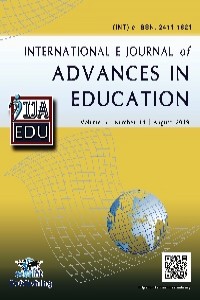Abstract
References
- [1] Duffy, B., Wake, R., Burrows, T., & Bremner, P. (2008). Closing the gaps–crime and public perceptions. International Review of Law, Computers & Technology, 22(1-2), 17-44. [2] Osman Nasr AndEnayatAlkhider, Online Complaint Management System. Vol.2 issue 6 June 2015 [3] Front Desk Changing Face ,https://punjabpolice.gov.pk/node/4443,25th November,2018 [4] Punjab Police government of the Punjab,https://punjabpolice.gov.pk/psrms, 25th November,2018 [5] Front Desk Changing Face Punjab Police ,https://punjabpolice.gov.pk/node/4443,25th November,2018 [6] Ewart, J. M. (1935). Police in India. Metropolitan Police CJ, 1, 100. [7] R.E.Fay, and J.Li, “Predicting Violent Crime Rates for the 2010 Redesign of the National Crime Victimization Survey (NCVS),” Section on Survey 10” [8] D.Muramatsu, Y.Makihra, H.Iwama, T.Tanoue, and Y.Yagi, “Gait Verification System for Supporting Criminal Investigation,” 2nd 50” [9] E-Computerized Operations Of Police Services paper was published in javaprojects/e-cops-project.com [10] Gershon, R. R., Barocas, B., Canton, A. N., Li, X., & Vlahov, D. (2009). Mental, physical, and behavioral outcomes associated with perceived work stress in police officers. Criminal justice and behavior, 36(3), 275-289. [11] Haberfeld, M. R. (2002). Critical issues in police training (Vol. 22). Upper Saddle River, NJ: Prentice Hall. [12] Marion, N. (1998). Police academy training: are we teaching recruits what they need to know?. Policing: An International Journal of Police Strategies & Management, 21(1), 54-79. [13] Birzer, M. L. (1999). Police training in the 21st century. FBI L. Enforcement Bull., 68, 16. [14] McCampbell, M. S. (1986). Field training for police officers: The state of the art. US Department of Justice, National Institute of Justice.
MODERNIZATION OF FRONT DESK PROJECT (FDP) TRAINING CURRICULUM FOR PUNJAB POLICE
Abstract
Front
Desk Project (FDP) was initiated by the Punjab government to bridge the gap between
police and public in 2015. Punjab police was facing too much complains and lack
of confidence from public as a friendly service oriented organization. FDP was
aimed to bring educated people in police station to deal with the complainants
by using latest technology to make it easier to lodge a complaint and First
Information Report (FIR). Previously Police manage their records manually but
after initiation of FDP, everything was computerized and easy to follow up a
case in short period of time. A training program of FDP was devised to train
the front desk officers who deal with public. It was initially designed as forty
days training based on computer typing skills and law at police training
centers. This program consisted of basics of Law, typing skills and
motivational lectures. This paper aims to identify the short comings in the
training program i.e. traditional curriculum which doesn’t match with the job
requirement, which requires software training, physiological, behavioral, ethical
trainings and also requires practical exposure. Moreover, exploring the
opportunities to propose a system for the transformation of traditional FDP
curriculum composed of state-of-the-art training methods. The proposed FDP
curriculum has a capacity to enhance capabilities and real time experience for
the trainees. This would also help trainers to automate the course and be
helpful in police working and management.
References
- [1] Duffy, B., Wake, R., Burrows, T., & Bremner, P. (2008). Closing the gaps–crime and public perceptions. International Review of Law, Computers & Technology, 22(1-2), 17-44. [2] Osman Nasr AndEnayatAlkhider, Online Complaint Management System. Vol.2 issue 6 June 2015 [3] Front Desk Changing Face ,https://punjabpolice.gov.pk/node/4443,25th November,2018 [4] Punjab Police government of the Punjab,https://punjabpolice.gov.pk/psrms, 25th November,2018 [5] Front Desk Changing Face Punjab Police ,https://punjabpolice.gov.pk/node/4443,25th November,2018 [6] Ewart, J. M. (1935). Police in India. Metropolitan Police CJ, 1, 100. [7] R.E.Fay, and J.Li, “Predicting Violent Crime Rates for the 2010 Redesign of the National Crime Victimization Survey (NCVS),” Section on Survey 10” [8] D.Muramatsu, Y.Makihra, H.Iwama, T.Tanoue, and Y.Yagi, “Gait Verification System for Supporting Criminal Investigation,” 2nd 50” [9] E-Computerized Operations Of Police Services paper was published in javaprojects/e-cops-project.com [10] Gershon, R. R., Barocas, B., Canton, A. N., Li, X., & Vlahov, D. (2009). Mental, physical, and behavioral outcomes associated with perceived work stress in police officers. Criminal justice and behavior, 36(3), 275-289. [11] Haberfeld, M. R. (2002). Critical issues in police training (Vol. 22). Upper Saddle River, NJ: Prentice Hall. [12] Marion, N. (1998). Police academy training: are we teaching recruits what they need to know?. Policing: An International Journal of Police Strategies & Management, 21(1), 54-79. [13] Birzer, M. L. (1999). Police training in the 21st century. FBI L. Enforcement Bull., 68, 16. [14] McCampbell, M. S. (1986). Field training for police officers: The state of the art. US Department of Justice, National Institute of Justice.
Details
| Primary Language | English |
|---|---|
| Journal Section | Articles |
| Authors | |
| Publication Date | September 15, 2019 |
| Submission Date | February 7, 2019 |
| Published in Issue | Year 2019 Volume: 5 Issue: 14 |
Published and Sponsored by OCERINT International © 2015 - 2025
Contact: ijaedujournal@hotmail.com
International E-Journal of Advances in Education by IJAEDU is licensed under a Creative Commons Attribution-NonCommercial 4.0 International License. Permissions beyond the scope of this license may be available at http://ijaedu.ocerintjournals.org


